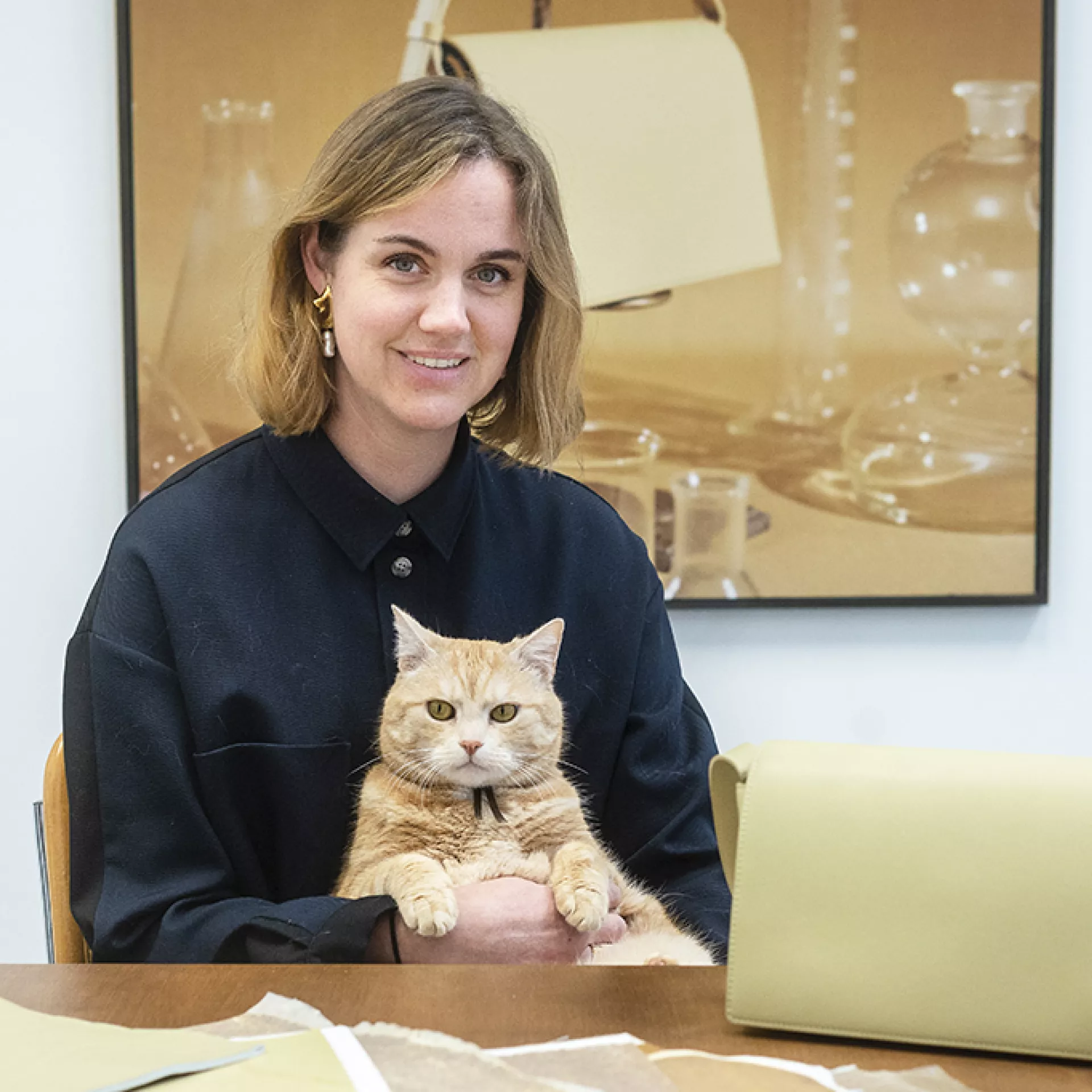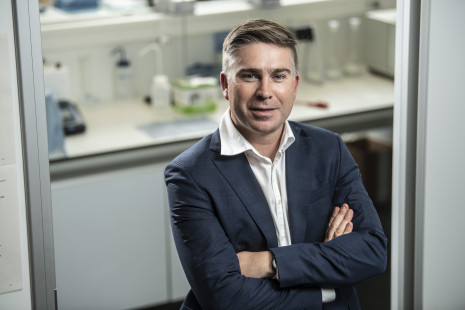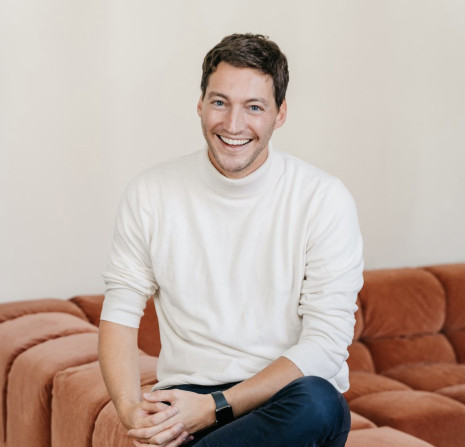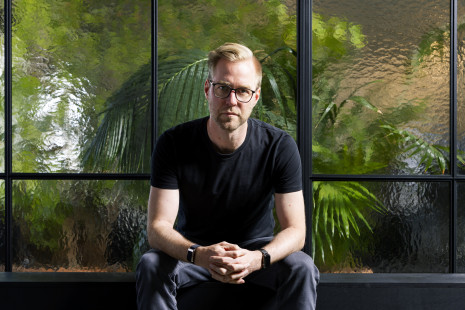Antwerp designer creates vegan handbag
Lies Mertens
It is important to focus on alternative materials that will in time replace leather
© Jonathan Ramael

In 2017, Lies Mertens set up her handbag brand, which she named after herself, in which elegance and functionality are combined. “I was looking for a stylish and comfortable laptop bag, which I could also use in my spare time and which reflects my personality. I didn't find what I was looking for, so I made a leather bag myself. That’s how the ball got rolling,” says the designer, who has focused heavily on sustainability right from the start.
“The leather we work with is a by-product of the meat industry. In this way, we want to prevent animals from dying just for the skin. The skins always come from Europe. We carefully select slaughterhouses that work in an ethical manner to help ensure that the animals can lead the best possible life.” Handbags are produced in workshops in Italy and Tunisia, with a strong focus on sustainability and decent working conditions.
Handbags are manufactured in workshops in Italy and Tunisia, with a strong focus on sustainability and decent working conditions
Better balance
“For me, leather is a very durable material: it lasts a long time and ages beautifully. Yet, alternatives are needed if we want to limit our climate impact. Because leather is derived from animals and livestock farming requires a lot from the environment. Besides, leather is never completely plant-based, because a certain amount of plastic is always used to finish it and make it smooth and consistent.”
“That’s why it’s important to focus on developing alternative materials now to replace leather in the long term,” says Mertens, who is convinced that using less leather and investing more in plant-based materials is the right path to a better balance.
“Today, when we think of innovation, we usually think about automation. Quite understandably, of course, but it is my resolute choice to renew with materials. What I find particularly interesting is that it allows me to make a real impact on the planet and the climate,” says Mertens.
The handbag collection in grape leather that she launched with Italian-based brand VEGEA last year is a good example. “This plant-based material is made from residual products from the wine industry. However, I decided to end the collaboration because the company’s communication about the composition of the material is not transparent enough. I personally strive for complete transparency, so it did not feel right to work with a material of which the origin cannot be fully traced.”
Belgian and circular: mycelium
Mertens continued to look for an alternative to leather and this is how she came into contact with Citribel, a major player in the chemical industry which produces citric acid for the pharmaceutical and food industries. In the production of citric acid, this Belgian company uses sugar molasses, a natural secondary stream from the Tienen sugar refineries derived from sugar beet or sugar cane.
For the conversion from molasses to citric acid, Citribel uses surface fermentation, a labour-intensive process through exposure to air in large, flat aluminium shells. In fermentation, bacteria, fungi or yeasts convert substances into a product, changing the acidity, taste, smell or appearance. Citribel uses the fungus ‘Aspergillus niger’ for this purpose. It grows long fibres and proteins in the first few days and only then makes citric acid. As a residual product, this creates a dense network of fungi: mycelium.
Mycelium has long been undervalued and processed as cattle feed for ruminants. Until Citribel, which grows about six football pitches a day of this spongy substance, began to wonder: Can we stop and do better with this voluminous secondary stream?
Mycelium is a by-product of a by-product. It is a fully circular material, which meets current environmental and climate challenges
Various research projects were launched into the application possibilities. This is how Lies Mertens and Citribel came together. “In recent years, together with MycaNova, the Citribel subsidiary, we have carried out research into the technical properties of mycelium, such as firmness and elasticity, with the aim of processing it into leather.”
“As a young player, we have the advantage of being able to change gears quickly. This allows us to quickly transform our shared knowledge and experience into an innovative end product. Mycelium is a by-product of a by-product. It is a fully circular material that meets current environmental and climate challenges,” the designer proudly says.
European pioneer project
After two and a half years of research and development, Lies Mertens is now the first European fashion brand to come out with a bag in the new mycelium. “Consumers and entrepreneurs are increasingly concerned with sustainability. The demand for and interest in innovative, environmentally friendly materials is increasing.”
“However, many people are still hesitant to make the move because they do not have sufficient knowledge,” says Mertens, who stresses that it is therefore crucial to share correct and well-founded information about alternative materials with the general public. She wants to do this through an exhibition where research into the material as well as the result are shown, supported by lectures, workshops, videos, etc. “From the end of April, everyone was welcome to come and see, feel and experience the new material in the workshop in Antwerp”, she says enthusiastically.
For the development of the project, Lies Mertens can count on support from the City of Antwerp, which provides annual financial support for innovative projects in fashion and design. “From research and development to production and the launch event: this would not have been possible without the support of the city. We are very grateful to the city for believing in our project, and for giving us the opportunity to spread our message further to the public,” says Mertens.
For the development of the project, Lies Mertens can count on support from the City of Antwerp, which provides annual financial support for innovative projects in fashion and design.
Despite increasing awareness about sustainability, many people still need to be convinced to buy (consumers) or sell (retailers) products based on innovative materials in their business. “People still mainly buy something because they like it. Functionality comes second, then durability and composition and materials.”
“I still work with leather in my collections because it allows me to reach a larger target group. I would like to introduce mycelium to the people who come to me in search of a leather bag. By informing them, I hope they are open to giving the new material a chance. I deliberately chose not to produce the new collection in leather anymore. In this way, I hope to convince many to choose mycelium.”
Stylish idealist
Lies Mertens already has a loyal audience in Antwerp. “We call our customers ‘stylish idealists’: people who generally care about sustainability and attach great importance to aesthetics and style.”
“When I am at the shop and look outside to passers-by for fifteen minutes, I see many of them with a bag of mine. Of course, I like that, but maybe it is also a sign that we have to look beyond Antwerp,” says the designer, who has ambitions to expand her handbag label with other innovative materials and products.
But everything at the right time. “I want to focus fully on what I’m doing now so I can do it right. I think it is very important to spread the message and inform as many people as possible about mycelium, so people will more easily overcome the threshold to choose this beautiful, sustainable material. I believe that the exhibition in our workshop can definitely contribute, so I look forward to welcoming many people there.”


